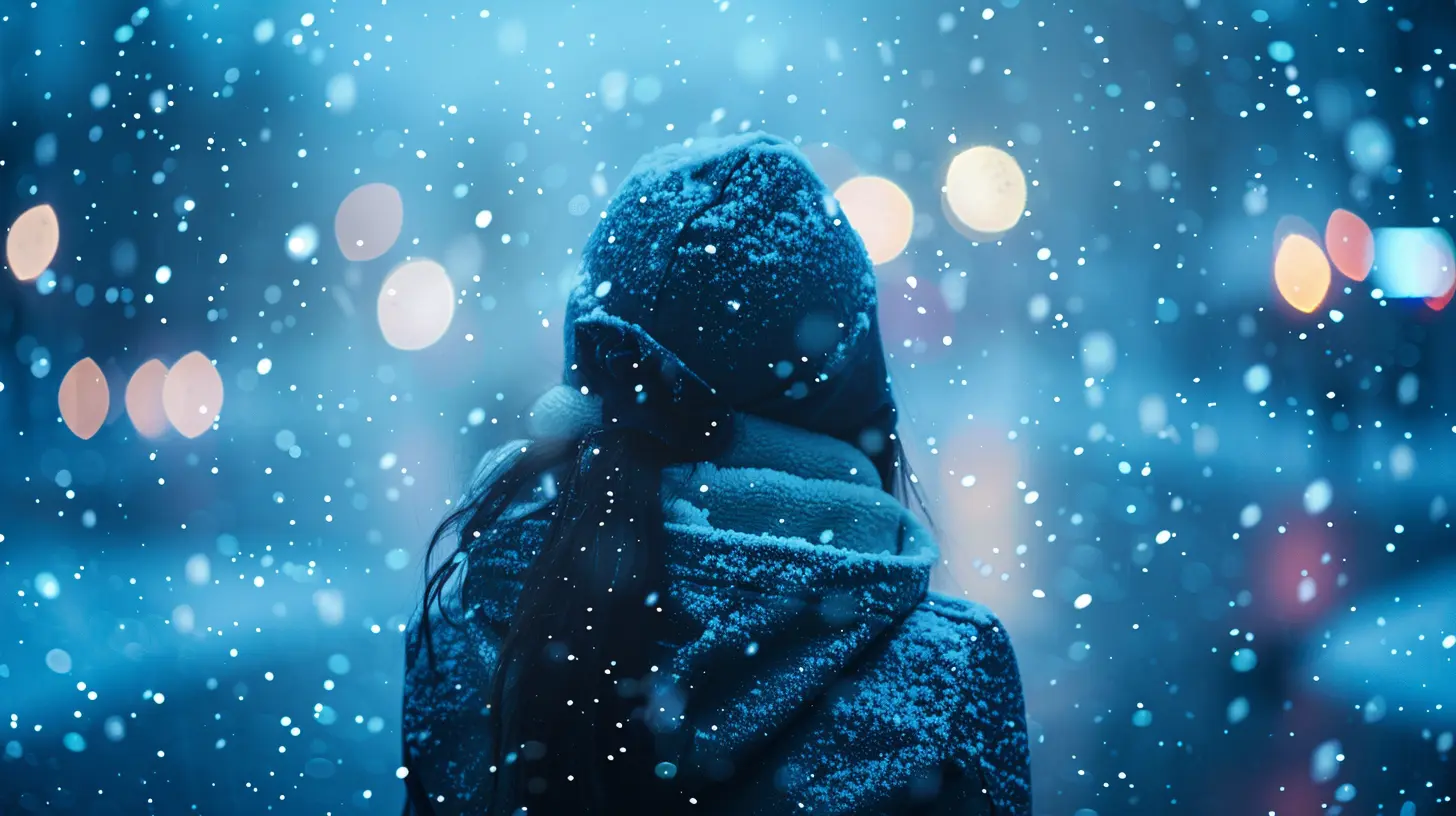The Science Behind Seasonal Affective Disorder
1 July 2025
Ever noticed how your mood dips when winter rolls in and the days get shorter? You're not alone. For many people, those darker months bring more than just chilly weather—they can actually trigger a mental health condition called Seasonal Affective Disorder, or SAD.
No, it’s not just about “feeling a little blue.” SAD is a real form of depression, and science has a lot to say about what causes it and how it can be treated. So grab a warm drink, get cozy, and let’s break down the fascinating science behind Seasonal Affective Disorder.
What Is Seasonal Affective Disorder (SAD)?
Let’s start with the basics.Seasonal Affective Disorder is a type of depression that typically follows a seasonal pattern. It usually kicks in during fall or winter and fades as spring or summer rolls around. It’s more than a case of the “winter blues”—it's a serious condition that can affect your energy, mood, sleep, and daily life.
Interestingly, the Diagnostic and Statistical Manual of Mental Disorders (DSM-5) lists SAD as a subtype of major depressive disorder with a seasonal pattern. So, it’s depression...with a twist.
Why Does SAD Happen? The Science Behind It
Now, here's where it gets really interesting. What’s actually going on in your brain and body that makes winter feel so emotionally heavy?1. A Light Problem: Reduced Sunlight Exposure
This is the biggie. As the days get shorter, we’re exposed to less natural sunlight. And light has a more powerful effect on your brain than you might think.Less sunlight means:
- Disrupted circadian rhythms: Your internal body clock gets out of sync.
- Lower serotonin levels: This “feel-good” neurotransmitter may dip in darker months.
- Increased melatonin: You might feel sleepier and more sluggish.
It's basically like your brain gets confused. Should it be awake or asleep? Happy or blah? Light helps regulate all that, and without enough of it, things start to go haywire.
2. Circadian Rhythm Gets Knocked Off Balance
You know how your phone has a clock that's constantly updated through your network? Your body has one too—your circadian rhythm.This internal clock regulates:
- Sleep-wake cycles
- Hormone production
- Body temperature
- Mood
When sunlight decreases, this rhythm gets disrupted. Your brain thinks it’s bedtime way before it actually is. That can throw everything off, from your sleep to your energy to your overall outlook on life.
3. Serotonin Takes a Nose Dive
Serotonin is like the brain’s natural happy juice. It helps regulate mood, appetite, and even cognition. Lack of sunlight can cause a drop in serotonin levels, and that can lead to depression.In fact, researchers believe this loss of light may interfere with the brain’s ability to produce and use serotonin properly, especially in people who are genetically predisposed to SAD.
4. Melatonin Overload
Melatonin is your body’s natural sleep hormone. It increases in the dark, which is great at night—but not so much during the day.In winter, your body may produce too much melatonin. That can make you feel sluggish, tired, or even like you’re in a constant fog. Not exactly ideal when you're trying to get through your workday or spend time with family.
Risk Factors: Who’s More Likely to Get SAD?
SAD doesn’t affect everyone, so what gives?Here are some of the common risk factors:
- Geography: The farther you live from the equator, the greater your risk. Think Canada, not California.
- Gender: Women are more likely to be affected, though men may experience more severe symptoms.
- Age: Young adults seem to be at higher risk.
- Family history: If depression runs in your family, your chances of developing SAD increase.
- Existing mental health conditions: Already dealing with depression or bipolar disorder? SAD can make symptoms worse.
So yeah, it's not just "all in your head"—there are actual biological and environmental reasons you might be more vulnerable.
Signs and Symptoms of SAD
How do you know if what you’re feeling is just a seasonal funk or something more serious?Here are the red flags:
- Low energy and fatigue
- Loss of interest in activities you used to enjoy
- Difficulty concentrating
- Changes in appetite (craving carbs, anyone?)
- Sleep problems (usually hypersomnia)
- Feeling hopeless or worthless
- Weight gain
- Social withdrawal ("hibernate mode")
If you’re noticing a pattern each year, especially in fall and winter, and it's affecting your daily functioning, it’s worth talking to a professional.
Can You Have SAD in the Summer?
Yes, but it’s less common. While winter-related SAD gets the most attention, some people experience depressive symptoms in the spring or summer. Symptoms may include insomnia, poor appetite, weight loss, and increased anxiety.The cause? It might be due to longer days, increased heat and humidity, or even shifting routines. Basically, our bodies are sensitive to environmental changes in both directions.
How Is SAD Diagnosed?
Diagnosis isn’t based on just one gloomy day. Most mental health professionals will look for:- A clear seasonal pattern (at least two consecutive years)
- Depression symptoms that interfere with daily life
- A full evaluation to rule out other conditions
Sometimes blood tests are also done to rule out vitamin deficiencies or thyroid issues (which can mimic depressive symptoms).
Effective Treatments for Seasonal Affective Disorder
Good news: SAD is treatable. The goal is to reset your internal clock and boost those mood-stabilizing chemicals naturally.1. Light Therapy (Phototherapy)
This is often the go-to treatment. It involves sitting near a light box that mimics natural sunlight, usually for about 20–30 minutes a day.- Best used in the morning
- Must have 10,000 lux brightness
- Helps reset circadian rhythms and balance serotonin/melatonin levels
Think of it like giving your brain a gentle wake-up hug from the sun.
2. Cognitive Behavioral Therapy (CBT)
CBT is a type of talk therapy that helps you reframe negative thoughts and develop healthier behavior patterns.For SAD, a special version called CBT-SAD has been shown to be particularly effective. The idea is to change the way you think about the seasons—and your symptoms.
3. Medications
In some cases, antidepressants are prescribed, especially SSRIs like fluoxetine or sertraline. They help increase serotonin levels and manage symptoms.Important to note: Medication takes time to work, and side effects vary. Always consult your doctor.
4. Vitamin D Supplements
There’s some evidence that low vitamin D levels might worsen SAD symptoms. While the jury’s still out on just how effective supplements are, they’re often recommended, especially since most of us aren’t getting enough during the winter.5. Lifestyle Tweaks
Don’t underestimate the power of small changes:- Open the blinds and let natural light in.
- Spend time outdoors, even on cloudy days.
- Exercise regularly—it boosts endorphins.
- Stick to a routine.
- Eat a balanced diet (sorry, carbs).
These little things can add up in a big way.
Can You Prevent SAD?
While you can’t always avoid it, you can reduce your risk:- Start light therapy early in fall
- Stay active and social, even when you don’t feel like it
- Keep your living space bright
- Get plenty of rest—but not too much
- Prepare a mental health toolkit for those tougher days
Being proactive really can help take the edge off before things take a turn.
Seasonal Affective Disorder vs. Major Depression: What’s the Difference?
They share a lot of symptoms, but here are the key differences:| Feature | SAD | Major Depression |
|--------|-----|------------------|
| Timing | Seasonal pattern | Year-round |
| Triggers | Lack of sunlight, seasons | Can be situational or none |
| Sleep | Often oversleeping | Can be insomnia or hypersomnia |
| Appetite | Craving carbs, weight gain | Decreased appetite common |
| Duration | Typically a few months | At least two weeks or more |
Still, it’s always best to let a mental health professional make the call.
Conclusion: Shedding Light on SAD
Seasonal Affective Disorder is more than just a seasonal slump. It’s a real condition backed by biological science, and it can seriously disrupt your life. But with the right information, support, and treatment plan, you don’t have to suffer through the seasons.If you or someone you care about is struggling with SAD, know that help is out there—and spring is always around the corner.
all images in this post were generated using AI tools
Category:
DepressionAuthor:

Christine Carter
Discussion
rate this article
2 comments
Rusty Bellamy
Seasonal Affective Disorder (SAD) is a significant mental health concern linked to seasonal changes in light exposure, affecting mood and behavior. Research indicates that reduced sunlight can disrupt circadian rhythms and serotonin levels, leading to symptoms of depression. Understanding these mechanisms is crucial for effective management and treatment options.
November 25, 2025 at 3:17 PM

Christine Carter
Thank you for highlighting the important connection between light exposure and seasonal affective disorder. Understanding these mechanisms is indeed vital for developing effective treatments.
Avianna Sawyer
Understanding SAD is crucial for wellness.
July 8, 2025 at 3:15 AM

Christine Carter
Absolutely! Understanding SAD is essential for recognizing its impact and finding effective coping strategies for better overall wellness.


